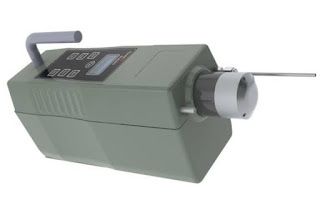
Four times in the past seven months I have given presentations on science outreach: Rochester Local Section of the American Chemical Society,
Pacifichem, the
Materials Research Society and the
American Chemical Society Publications webinar. In each of these presentations I told the story of how I got started with my science outreach in my own community of Cape Cod. This is story of being connected to my Northeastern Local Section of the American Chemical Society (NESACS) National Chemistry Week Coordinator who became my friend and science outreach mentor. I met Christine Jawork-Lopes at the
October 2010 meeting of NESACS. The guest lecturer that evening was
Al Hazari, who became another inspiration for me. I'd gone to the meeting that night to ask the Chair to sign my science café funding proposal for International Year of Chemistry mini grants. My proposal was well received and I committed to organizing not just one but
four science cafes during the International Year of Chemistry 2011! I'm easily convinced and up for a challenge-it's just my personality. Christine or Chris as we call her at NESACS, gave me some materials to get me started for a small-scale hands-on activity I was planning to do at a local after school program at the
Cape Cod YMCA the following week. This is what sparked our friendship and subsequent mentorship. Once I found out that her students at Emmanuel College call her 'Dr. J-Lo' I did, too.
I attended Dr. J-Lo's National Chemistry Week (NCW) 'prep day' at the Museum of Science Boston in 2011. Not only was it awesome to use their labs, who doesn't love to see what's 'behind the curtain', but I

was impressed by her level of dedication and attention to detail-having the volunteers run all the experiments in advance to avoid any issues at the NCW event.
The 'aha moment' for me was
Hanover Day in 2011. Dr. J-Lo had booked a table at this annual civic event held on a field where local vendors and the like, showed their wares. At our ACS tables, we showed chemistry! It was an unexpected and delightfully received experience and it made me realize that you can do science outreach
any where. All you need is a tote bag of materials, a table and a table cloth!
 |
Kids making their own hand-sanitizer-replicated from the NCW
Boston event at the Cape Cod Science Café Healthy Kids event
Materials and inspiration provided by Dr. J-Lo. Photo by Randy
Weintraub. |

In 2011, Dr. J-Lo and her team at the Museum of Science Boston and the Boston Children's Museum, developed chemistry activities related to kids health that won NESACS a Chemluminary award (awarded in 2012 for the 2011 activity) for the 'Most Creative National Chemistry Week Celebration Using the Theme'. See the cover of the NESACS Nucleus (right) and read the article here:
http://www.nesacs.org/pub_nucleus/2012/Oct2012.pdf
 |
| T-Shirt design by Dr. J-Lo's daughter, Cassie in 2015 |

In 2012, Dr. J-Lo asked me to come take photos at NCW. The theme was Nanotechnology and her show-stopper was a Carbon Nanotube model. She joked that if I couldn't get this photographable moment into Chemical and Engineering News then we'd never get anything into it! Ours was a sure winner and we made it into the highly competitive NCW roundup (see left).

A truly pivotal moment in my science outreach was participation in the American Association of the Advancement of Science
Family Science Days in 2013. I'd obtained an Innovative Project Grant on behalf of the ACS Division of Small Chemical Businesses to conduct an Entrepreneurial Career Workshop. Encouraged by a fellow ACS colleague, George Ruger, to reserve an outreach table at the event, I obliged. Dr. J-Lo connected me up with her contacts at the Museum of Science, who provided materials and personnel and this combination coupled with my father's colleagues from Suffolk University allowed us to forge a formidable relationship with the Boy Scouts. This is what led to our Chemluminary award winning
'Wicked Cool Autumn Welcome' with the Cape & Islands Boy Scout Council of America. This successful Cape Cod NCW event was the precursor for
'STEM Journey' which will, in 2017, mark it's fourth consecutive year.
 |
Family friends flanked by my Abby (left) and Dr. J-Lo's Cassie (right)
2011 NCW at MOS Boston |

Part of my attraction towards Dr. J-Lo was that she too, is a working mom who volunteers for her professional society. Our kids are the same ages and have similar interests such as sharing in their mother's science outreach events and Girl Scouts. Additionally we found ourselves with similar hobbies, like running for instance. We met up after we'd both run the Boston Athletic Association 10K in 2014 to take a photo and show off our '10K bling'. At the Fall National Meeting of the ACS in 2014 we ran on Saturday morning and again at the same meeting for the ACS Younger Chemists Committee 5K.

I am so grateful to Dr. Jo-Lo for being such an enthusiastic supporter of my science outreach efforts both on Cape Cod and for the last five years at the Cambridge Science Festival. Without her early and continued support I would not have been able to develop my outreach niche.

It was such a pleasure to see Dr. J-Lo receive the Henry A. Hill Award in October 2015. There are very few people who embody the spirit of Henry Hill in leadership, professionalism and outreach and my dear friend and mentor, Dr. J-Lo certainly do. Dr. J-Lo is a true Chemistry Ambassador. Read more about this award and the amazing Dr. J-Lo
here.




























